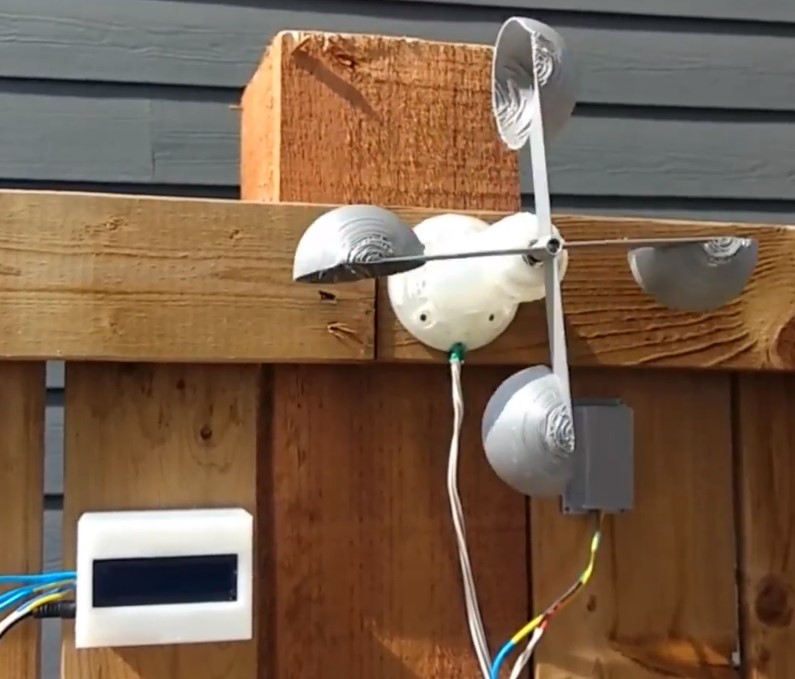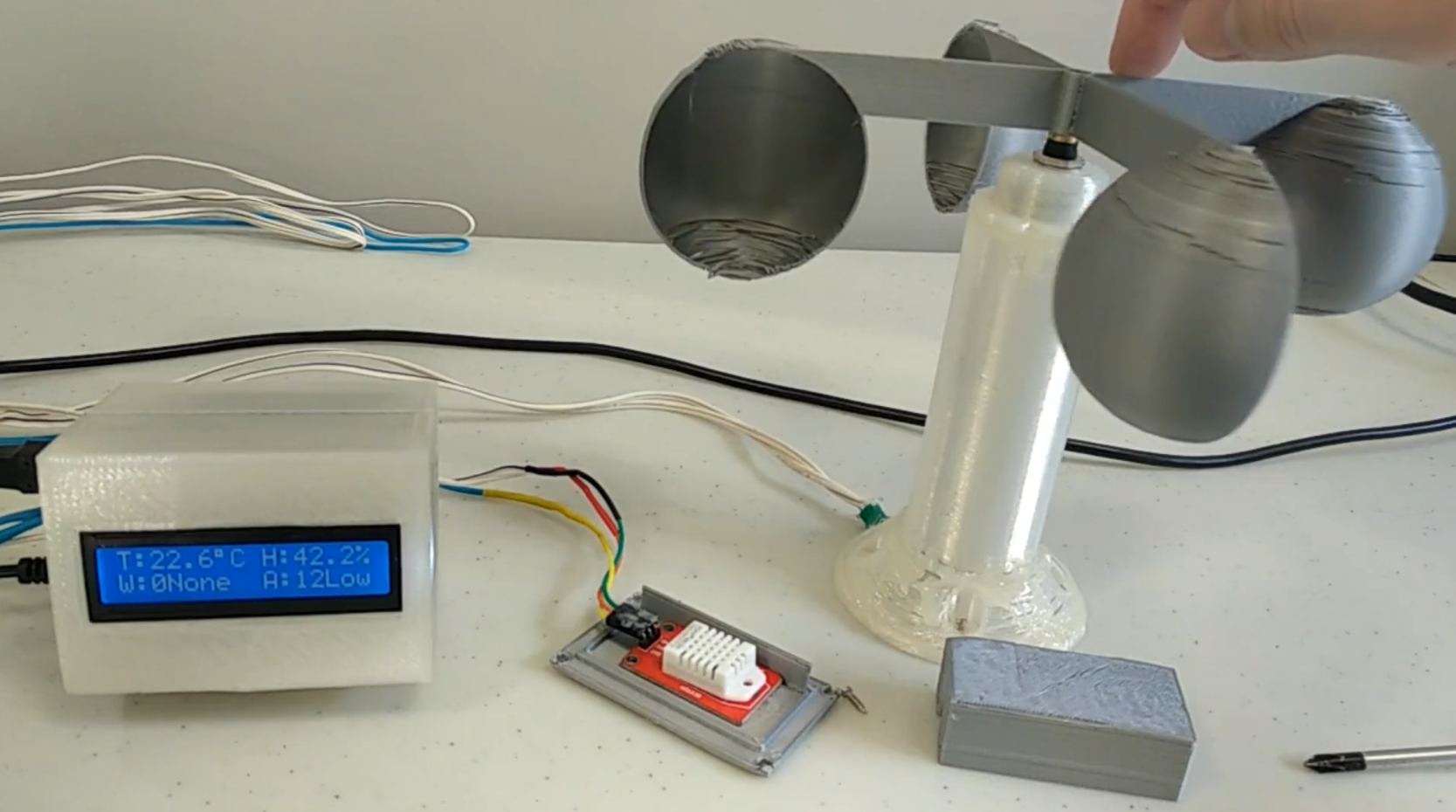Arduino Weather Station, with Anemometer, Built for an Engineering Course
TAGS: electronics; software; nature projects; Arduino; DHT22; Anemometer; Rotary Encoder; 3D modeling; 3D printing; product reporting
Why I Did This
It was the project of one of my engineering courses where the focus was to learn some Arduino electronics building and to learn how to brainstorm and report projects (for imaginary customers). We were tasked with building a wind speed sensor (turbine) using a rotary encoder and Arduino, plus 2 additional sensors of our choice (I chose temperature and humidity). I was able to work on my coding skills through Arduino programming. I also was able to build on my Fusion 360 3D modeling and printing skills by printing some wind blades and housings. Finally, we had to summarize our project into a report PDF.

Weather system (anemometer, temperature, humidity sensors) installed on a fence post.
Design Walkthrough
I won’t go into too much textual detail here because I made a link to 3-minute video
showcasing the project, and I have linked the project pdf report.
3-minute showcase video:
https://drive.google.com/file/d/1h4TA9GO__wnLZlGzS2l-zAZamB9U_P4D/view?usp=sharing
Project summary report (includes 3D models and Arduino code):
https://drive.google.com/file/d/1OjcB9O3FXe1hG6xHjeqg075VgFYRIVXw/view?usp=sharing
Given that this was done during the 2020 pandemic (so everyone’s isolated with virtual group
meetings),
and I was the self-appointed leader of the project (with the most experience with 3D
modeling,
Arduino electronics, and reports), I would confidently say I did more than 90% of the
project myself.

System with clearer look at LCD and DHT (temperature/humidity sensor).
The LCD is
displaying temperature (T), humidity (H), analog wind value (W), and average analog
wind value
over a short timespan (A). The average helps the viewer generalize the wind
values.
Lessons Learned and Future Changes
Reports are a nice tool. I did the project a few years ago, so I forgot the material since then, but the report I made certainly jogs my memory as to what work I had to do to build this system.I think the weather system actually works. I remember distinctly during a period when collecting the temperature values (for calibration) that I noticed the system temperature was dropping, humidity was rising, and the wind average was getting higher; I thought to myself "I wonder if a storm is coming?"... Low and behold, within 20 minutes the area was covered in dark clouds and rain, so maybe thing actually works?! HaHa.
References
N/A (There are ones seen within the report.)